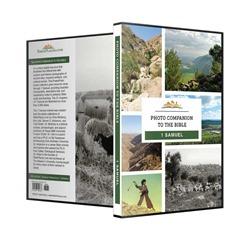A fragment of an ancient Canaanite deity has been discovered in the temple at Moza, providing some explanation for why high places in Judah were condemned by the biblical writers.
A fortress in the French Hill neighborhood of Jerusalem is being renovated. This fortress is believed to have protected the city during the time of Judah’s kings.
After a $12 million renovation project, a beautiful mosaic is about to open to the public at Hisham’s Palace in Jericho.
The debate continues as to whether Herod’s Galilean temple was located at Caesarea Philippi or at Omrit, and a permanent exhibit including a large column from Omrit is now on display at Tel Hai College.
Eight antiquities thieves digging for buried gold were nabbed in the act.
“Hear, O Israel: The Magic of the Shema” is a new exhibit at the Israel Museum open through April 2022.
Hicham Aboutaam shares his six favorite pieces in the Israel Museum.
An online course on Joshua’s Altar Site begins on Sunday with the 5-lesson study featuring Shay Bar, Scott Stripling, Ralph Hawkins, Zvi Koenigsberg, and Aaron Lipkin.
The Urim and the Thummim are the subject on the latest episode of the Biblical World podcast, with Doug Bookman joining host Mary Buck to share his research.
Bryan Windle’s top three reports in biblical archaeology this month are all likely to end up in the year’s top 10 list.
This week we released Paul’s Epistles in our Photo Companion to the Bible series. The sale price ends soon.
HT: Agade, Joseph Lauer, Arne Halbakken, Charles Savelle, Daniel Wright, Paleojudaica, Ted Weis
